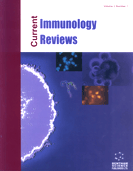Abstract
In the face of emerging infectious diseases, we are challenged to develop innovative vaccine strategies that can protect against rapidly evolving and highly virulent pathogens. Since CD4 T cells are needed to generate and maintain protective B cell and CD8 T cell immunity, new vaccines should ideally elicit both T and B cell memory. In order to generate long-lived immune memory in both T and B cell compartments, such vaccines will need to induce cross-reactive memory against highly conserved antigens within a given pathogen. Acute influenza infection provides a model system whereby the generation of T cell memory is influenced by residual antigen depots. These antigen depots persist for months after live virus clearance, and provide continued, low level T cell stimulation. Here we discuss the impact and implications of residual pathogen-derived antigen depots on the generation and maintenance of T cell immunity. We propose that effective vaccines may need to include persistent depots of conserved proteins to generate a functionally flexible memory T cell pool that can confer protection against rapidly evolving pathogens.
Keywords: Antigen presentation, CD4 memory T cells, influenza, cognate help, vaccine, heterosubtypic immunity
 1
1

